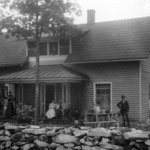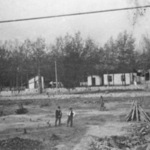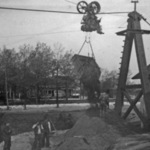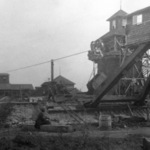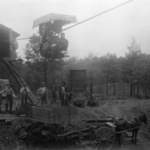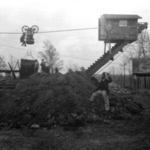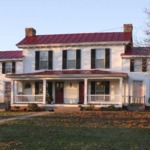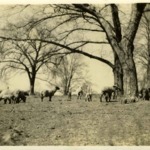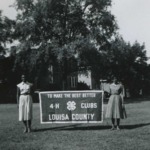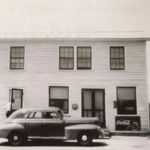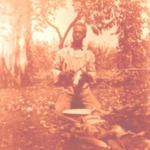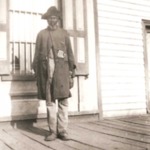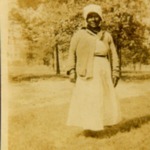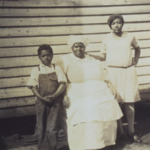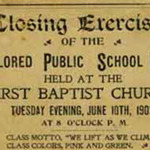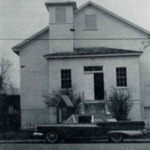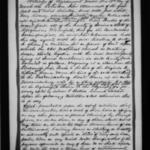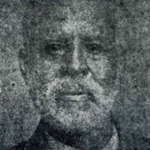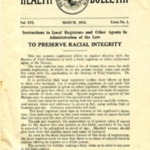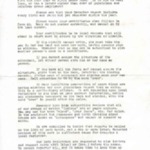Browse Items (1533 total)
Sort by:
Arminius Mines Housing
This image is of a home at the Arminius Mines, one of the largest mines in the area. Families of miners lived on the property and created their own distinct culture that altered the entire town. The miners were rowdier than Mineral's previous…
Tags: Mining
Arminius Mines
This image displays the daily operations of the Arminius mines. It includes a man transporting supplies across the mines by a skip. Skips were capable of moving three to four tons of ore across short distances at the mine.
Tags: Mining
Arminius Mines
This image shows the daily operations of the Arminius mines as ore is transported over a cable using a skip and dumped to be crushed. In the background, managers' housing can be seen. The managers of the Arminius Mines, especially superintendent…
Tags: Mining
Arminius Mines
This image displays the daily operations of the Arminius mines, one of the largest mines in the area. Several men are watching a skip above dump ore that had been transported across a cable to be crushed.
Tags: Mining
Arminius Mines
This image is of the daily operations of the Arminius mines, one of the largest mines in the area. Miners used a skip to transport three or four tons of ore at a time across the mine to be crushed before being washed in jigs.
Tags: Mining
Arminius Mines
This image displays the daily operations of the Arminius mines, one of the largest mines in the area. Pyrite from the Arminius Mines was often manufactured for sulphuric acid in fertilizer.
Tags: Mining
Henry "Box" Brown
Henry Brown was born about 1815 in Louisa County at a plantation known as “The Hermitage,†located about two miles from Cuckoo (shown in this photo as it appears in 2011). His master, John Barret, was a Revolutionary war veteran and a former…
Tags: African-American, Plantation, slavery
Corduroy Farm
These images are from Corduroy Farm, a large farm located about 8 miles west from the town of Louisa. during the World War II period. Rural electrification did not come to outlying areas until a few years after the war, so farming practices relied…
Tags: Agriculture, World War II
Negro 4-H Clubs
During the Jim Crow era every area of life was segregated. In many ways, two parallel universes existed in the South and in Central Virginia; one white and one black. Since agriculture was vitally imporant to white and black farmers in Louisa…
Gordon Family
While many African American families struggled to survive as well as to receive a good education, there were a few families who prospered after emancipation. Reuben Gordon was a former slave who worked on the Garland Plantation. After the Civil War,…
Tags: African American, Segregation
Daily Life
For many African Americans, daily life after slavery was not much different than life in bondage. There was still a struggle for survival for many African American families. Most of the residents of Louisa County lived on farms and until Rural…
Jeff Porter
These images are photos of Jeff Porter and his home. Porter was born sometime in 1849. Throughout his lifetime in Louisa County, Porter lived at Trevillians Depot. We know little more about him than what these photos reveal, except that he was a…
Tags: African American, Segregation
Aunt Dinah Robinson
This photograph is an image of Aunt Dinah Robinson who served as the janitor at the Mineral High School during the era of segregation. In most cases, it was African Americans who worked as the janitors at white schools, and they witnessed the…
Tags: African American, Schools, Segregation
At Poindexter Store
This photograph is an image of three African American individuals outside of the Poindexter Store in Louisa County. The style of clothing of the two women in this photograph suggests that both are domestic workers (the apron and the hats). Often, if…
Tags: African American, Segregation
"WE LIFT AS WE CLIMB"
Early African American schools were designed to advance younger generations of African Americans. Within this community of individuals there was a belief that, as an African American became more educated and continued to exceed in society, the…
Tags: African American, Churches, Schools, Segregation
First Baptist Church
The picture on the left is an image of the original building for the First Baptist Church on its present location one block west of the courthouse. This is not the building that the trustees purchased in 1866. The picture on the right is an image of…
Purchase of property for First Baptist Church
These documents are copies from the Freedmen's Bureau Field Office at Louisa Court House of the contract between John Cammack and the trustees of the First Baptist Church (including Fountain Perkins) for the purchase of the building that would become…
Fountain Perkins
Church became a strong symbol in the African American community after the Civil War. To African Americans, the church was a place where they were in control and free of oppression. One of the first African American churches to be built and organized…
Tags: African-American, Reconstruction
Instructions for Registration/Racial Integrity laws
This document is a pamphlet directing Local Registrars and "Other Agents in Adminstration of the Law" on how to register indivduals on birth certificates. This pamphlet also contains a copy of the Racial Purity Act laws (for use at the discretion of…
Tags: African American, Civil Rights, Segregation
Race and Vital Records
This document is a letter from the Virginia State Registrar to all Local Registrars in Virginia demanding that the physicians and midwives take better care when writing ceritificates of birth and death. He explains that these certificates will become…
Tags: African American, Civil Rights, Segregation
